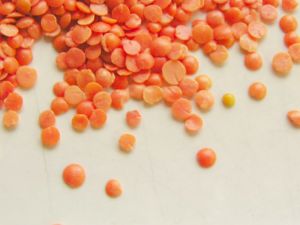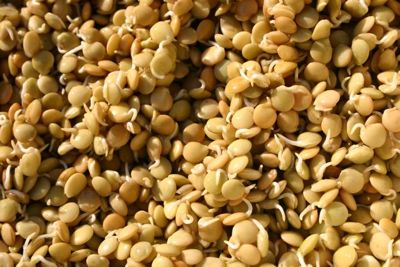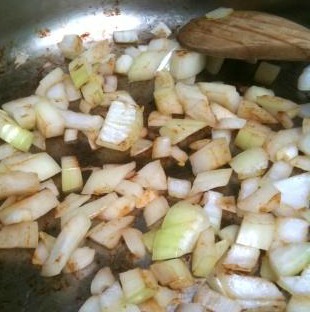Da Facts
The lentil (Lens ensculenta) is a legume that grows in pods containing one or two lentil seeds. They are believed to have originated in central Asia.
Lentils have been eaten by humans since Neolithic times and were one of the first domesticated crops. In the Middle East, lentil seeds have been found dating back more than 8000 years.

In the Old Testament, Esau gives up his birthright to Jacob in exchange for a bowl of lentil soup. The Greek playwright Aristophanes called lentil soup the "sweetest of delicacies." Lentils have been found in Egyptian tombs dating as far back as 2400 BC.
In India, the lentil is known as dal or daal. For many centuries, lentils were considered to be "the poor man's meat." In Catholic countries, those who couldn't afford fish would eat lentils during Lent instead.
There are many varieties and colors of lentils, including brown, yellow, black, orange, red and green. Beluga lentils are black and one of the smallest varieties of lentils, having an appearance similar to caviar.

French green lentils are small, delicate, and flavorful and hold their shape after cooking better than many other types of lentil. The most common lentils used in the United States are green and brown, since these varieties are best at retaining their shape after cooking.
The optical lens is named after the Latin word for lentil, lens. Unlike most other beans, lentils don't need to be soaked before cooking.
More Facts
With about 30% of their calories from protein, lentils have the third-highest level of protein, by weight, of any legume or nut, after soybeans and hemp. Proteins include the essential amino acids isoleucine and lysine , and lentils are an essential source of inexpensive protein in many parts of the world which have large vegetarian populations.
Lentils are deficient in two essential amino acids, methionine and cysteine. However, sprouted lentils contain sufficient levels of all essential amino acids, including methionine and cysteine.
Lentils also contain dietary fiber, folate, vitamin B1, and minerals. Red (or pink) lentils contain a lower concentration of fiber than green lentils (11% rather than 31%). Health magazine has selected lentils as one of the five healthiest foods. Lentils are often mixed with grains, such as rice, which results in a complete protein dish.
References:
Randy Sell. "Lentil". North Dakota State University Department of Agricultural Economics. Archived from the original on 2009-06-21. Retrieved 2011-12-14.
Raymond, Joan (March 2006). "World's Healthiest Foods: Lentils (India)". Health Magazine.

Da Story
As a child and up to now, lentils have been one of my favorite beany legumes! There are two traditional Lebanese lentil dishes that Mom made quite often, and that I devoured... 1) Mjaddara : a lentil and rice mash that is better than chocolate fudge; and 2) Shawrabit Adas: 'Lentil Soup' with Swiss Chard and Cumin.
Both dishes were on the Top of my Comfort Foods list. On wintry days when I visited my Uncle Yusef's house where Tehta (Grandma) lived, we'd huddle around their kerosene stove in the 'winter room', sitting on long cushions that bordered the wall, and eat bowls of Mjaddara with pita bread, pickles and shredded cabbage salad. My 3 cousins and I would listen to the adult conversations, poking fun at whoever was featured in each story, or play silly word games.
Lentils are versatile. You can add them to salads, to chilies, and soups.
Click on the Recipe Names to go to the recipes.
~ Sahtein! ♥








